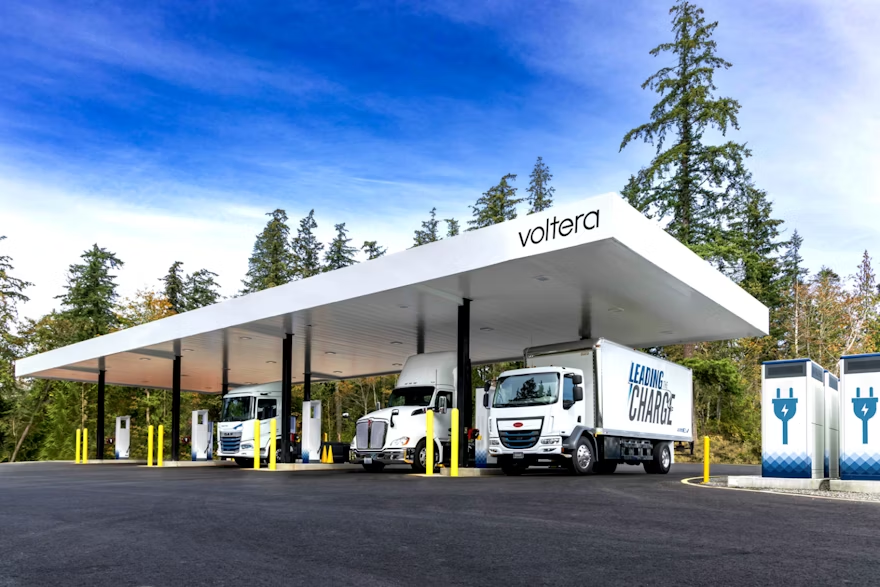Subtotal $0.00
Voltera, a Palo Alto-based Charging-as-a-Service (CaaS) provider, is set to play a key role in the development of a 6.5 Megawatt (MW), $44 million charging depot for medium- and heavy-duty trucks in Utah’s Salt Lake Valley region. This initiative, part of a larger inland port facility, represents a significant step in expanding commercial truck charging infrastructure in an area poised for growth.
Federal and Industry Investment in Electrification
The funding for this project is largely derived from the Department of Energy (DOE)’s SuperTruck Charge initiative. Utah State University’s ASPIRE Engineering Research Center has been allocated $22 million in DOE funding, supplemented by $15 million in industry investments. The objective is to develop a reliable, scalable charging infrastructure that can serve as a national model for electrification in freight transport. Upon completion, the Salt Lake Valley facility will support freight operations in a region with considerable demand for commercial charging solutions.
The Role of Voltera and Infrastructure Development
Voltera’s involvement in the project focuses on providing and installing charging equipment that meets the specific needs of the region’s trucking industry. According to Tom Ashley, Voltera’s Vice President of Government and Utility Affairs, “Utah is quickly becoming an important innovation hub, and the region is primed to develop and leverage technologies to support efficient fleet operations and mitigate freight impact on Salt Lake Valley’s air quality.”
The charging depot will be a significant advancement in infrastructure, featuring 12 MW of charging equipment designed to support 9 MW of peak demand. This will be accomplished through a combination of 4.5 MW drawn from the grid and another 4.5 MW supplied by battery energy storage systems. Such an approach is aligned with the broader objectives of the Clean Ports Program, a $3 billion fund established under the 2022 Inflation Reduction Act, which seeks to accelerate the transition toward cleaner freight transportation.
Air Quality and the Push for Electrification
The Salt Lake Valley region has been facing deteriorating air quality, which has intensified efforts to implement cleaner transportation solutions. Ashley highlighted the local support for electrification, noting that “there’s a lot of opportunities to minimize and reduce the contribution that freight transportation makes to [air quality concerns].” While national policy debates over electric vehicle incentives continue, local and industry stakeholders remain committed to solutions that address regional environmental challenges.
A Scalable Model for the Future
The project is designed to serve as a proof of concept for fleet electrification and CaaS business models. ASPIRE director Regan Zane emphasized that “this project will demonstrate the business model and economic viability for charging-as-a-service and fleet electrification in the state of Utah. Together with our project partners, we will be proving that these solutions are scalable beyond government incentives and have strong industry support.”
In addition to Voltera and ASPIRE, key partners in the project include PacifiCorp, Eaton, and the National Renewable Energy Laboratory (NREL). Their combined expertise is expected to facilitate the development of a charging infrastructure that could serve as a blueprint for similar projects nationwide.
Conclusion
The Salt Lake Valley charging depot represents a critical investment in the future of freight electrification. By combining federal funding with private sector expertise, this initiative seeks to address both environmental concerns and infrastructure gaps in commercial trucking. As deployment progresses, the project’s success could inform broader strategies for electrifying medium- and heavy-duty transportation, paving the way for a more sustainable logistics network across the United States.


